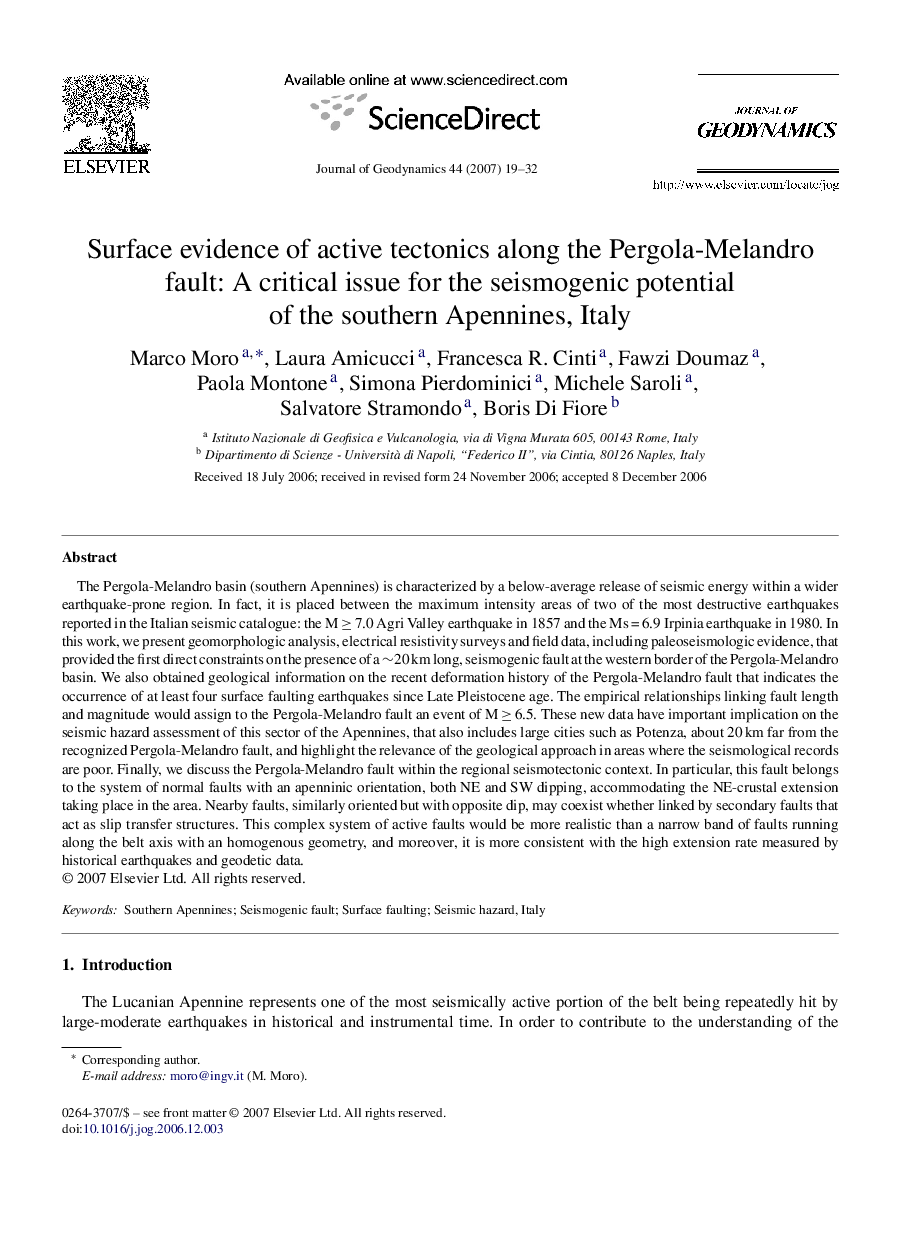| کد مقاله | کد نشریه | سال انتشار | مقاله انگلیسی | نسخه تمام متن |
|---|---|---|---|---|
| 4688752 | 1635807 | 2007 | 14 صفحه PDF | دانلود رایگان |

The Pergola-Melandro basin (southern Apennines) is characterized by a below-average release of seismic energy within a wider earthquake-prone region. In fact, it is placed between the maximum intensity areas of two of the most destructive earthquakes reported in the Italian seismic catalogue: the M ≥ 7.0 Agri Valley earthquake in 1857 and the Ms = 6.9 Irpinia earthquake in 1980. In this work, we present geomorphologic analysis, electrical resistivity surveys and field data, including paleoseismologic evidence, that provided the first direct constraints on the presence of a ∼20 km long, seismogenic fault at the western border of the Pergola-Melandro basin. We also obtained geological information on the recent deformation history of the Pergola-Melandro fault that indicates the occurrence of at least four surface faulting earthquakes since Late Pleistocene age. The empirical relationships linking fault length and magnitude would assign to the Pergola-Melandro fault an event of M ≥ 6.5. These new data have important implication on the seismic hazard assessment of this sector of the Apennines, that also includes large cities such as Potenza, about 20 km far from the recognized Pergola-Melandro fault, and highlight the relevance of the geological approach in areas where the seismological records are poor. Finally, we discuss the Pergola-Melandro fault within the regional seismotectonic context. In particular, this fault belongs to the system of normal faults with an apenninic orientation, both NE and SW dipping, accommodating the NE-crustal extension taking place in the area. Nearby faults, similarly oriented but with opposite dip, may coexist whether linked by secondary faults that act as slip transfer structures. This complex system of active faults would be more realistic than a narrow band of faults running along the belt axis with an homogenous geometry, and moreover, it is more consistent with the high extension rate measured by historical earthquakes and geodetic data.
Journal: Journal of Geodynamics - Volume 44, Issues 1–2, August 2007, Pages 19–32